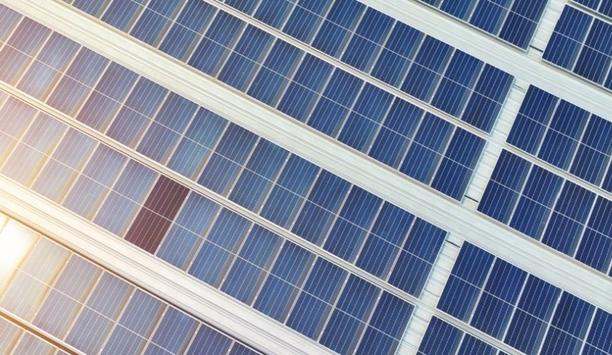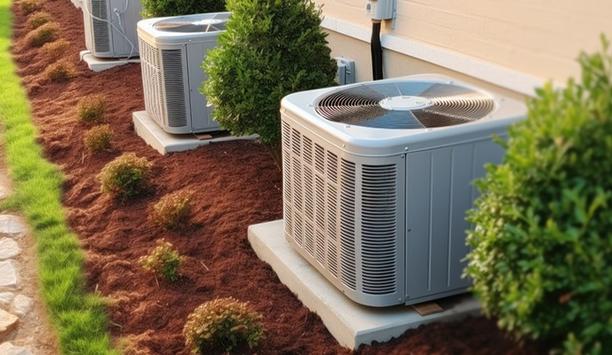Hydronics systems rely on water, steam, or water solutions to distribute heating and cooling throughout a building. They are inherently more eco-friendly than conventional alternatives.
First and foremost, using water as a temperature regulation method is a natural choice. There is no carbon footprint involved in its creation, and there is no inherent danger in exposure to water in the event of a system failure. Water is more efficient at carrying heating and cooling loads than other technologies. Other benefits include a wider range of maintenance flexibility and longer system life expectancy.
overall efficiency of hydronics
“A misconception about hydronics is that it's more expensive compared to other HVAC systems,” says Jim Nolan, market development manager, Xylem.
“While hydronic systems may require a larger upfront investment, lifecycle costs are significantly lower due to the overall efficiency of hydronics.”
Flexibility in Cold and Warm Climates
Hydronics offers a wider range of flexibility for components, operation, and maintenance
Compared to other systems, hydronics offers a wider range of flexibility for components, operation, and maintenance. That flexibility also extends to extreme climate conditions, says Nolan. Hydronics perform reliably at very cold and very warm temperatures for improved occupant comfort and reduced energy costs. Additionally, hydronic systems draw on water’s natural thermal storage capabilities, which can substantially offset operating costs during peak demand periods.
For over 100 years, Xylem’s Bell & Gossett has been at the forefront of hydronic systems as a manufacturer of pumps, valves, heat exchangers, and accessories — including steam and heat transfer — for plumbing and wastewater applications. Since 1916, the company has made a name for itself through products, industry-pioneering training at the Little Red Schoolhouse, comprehensive solutions, and application expertise, says Nolan.
Products and sustainability efforts
“Xylem is continuously innovating to advance and embed sustainability holistically into our solutions – from the materials we source, to making them more compact and cutting emissions, to high-efficiency motors,” adds Nolan.
Advancing the efficacy and efficiency of their foundational products is what Bell & Gossett is known for, and more broadly, what Xylem is doing to embed “high impact” into all its products and sustainability efforts, says the company.
Quantifiable Effect on Decarbonization
Smart pump solutions like Xylem’s Hydrovar® X Smart Motor tout ultra-premium efficiency
As the built environment increasingly weighs the effects of climate change and decarbonization, products must keep pace to demonstrate quantifiable impact on addressing these challenges. Smart pump solutions like Xylem’s Hydrovar® X Smart Motor tout ultra-premium efficiency, sustainably sourced materials, and compact design, delivering high impact in terms of intelligence and productivity. Built-in condition monitoring empowers customers to leverage data for additional pump protection and optimized performance.
Equally essential is continued education and collaboration with industry partners to help commercial building owners navigate the challenges of achieving decarbonization and net-zero goals, says Nolan. That includes training opportunities at Bell & Gossett’s Little Red Schoolhouse to teach industry professionals about sustainable solutions, he adds.
Ideal distribution system
“Water is considered technology agnostic – no matter what type of technology exists today or in the future, modern hydronic systems can easily adapt to a variety of energy sources,” says Nolan. “As solar and geothermal grow, building owners and designers are recognizing that hydronics provide an ideal distribution system for these alternative technologies to perform.”
Hydronic system efficiency is already well-documented in thousands of real-world applications, says Nolan. Hydronics reduces operating costs by using water as a heat transfer medium, which is more effective than air. Efficiency and cost savings are maximized when these systems are powered by renewable energy sources.
Overcoming Obstacles to Equipment Reuse
In some cases, though, existing HVAC equipment may be too outdated for reuse
In some cases, existing HVAC equipment can be reused to achieve sustainable, carbon-neutral systems, says Nolan. Adaptive reuse projects involve repurposing an existing building for new use and reusing as much existing equipment as possible to save costs, conserve resources, and minimize construction-related disruptions.
Upgrading existing hydronic systems with smart technology like advanced controls and smart motors can improve performance and efficiency, says Nolan. Another option is to incorporate high-efficiency components like heat pumps. In some cases, though, existing HVAC equipment may be too outdated for reuse. In others, existing building footprints may limit design options. To overcome this, a thorough assessment of current building conditions and performance can provide a better understanding of the original system design.
Identify ways to reduce energy consumption
Energy audits, building performance evaluations and environmental impact assessments provide valuable insights into an existing building’s energy consumption, resource usage and environmental footprint. The purpose of these tools is to identify ways to reduce energy consumption or operating costs by upgrading to more energy-efficient equipment or by building a better system.
“There’s a whole industry built around energy audits—they’re typically conducted by industry professionals who have qualifications or certifications to ensure they have the knowledge and skills to perform thorough and accurate assessments,” says Nolan.
Challenges to Deregulation and Achieving Net Zero
Deregulation or the elimination of natural gas in existing buildings presents challenges. While hydronic equipment is essentially decarbonized because it runs on electricity, many utilities still rely on fossil fuels. Only when those providers switch to renewable energy and the grid infrastructure is expanded to deliver enough electricity will environmental impact be realized.
Although many areas are moving toward decarbonization and achieving net-zero energy, in regions where energy is cheap, there are few incentives to embrace renewable energy and building electrification. As HVAC equipment becomes more efficient and uses less energy, communities will realize the cost savings and gravitate toward better technology.





































